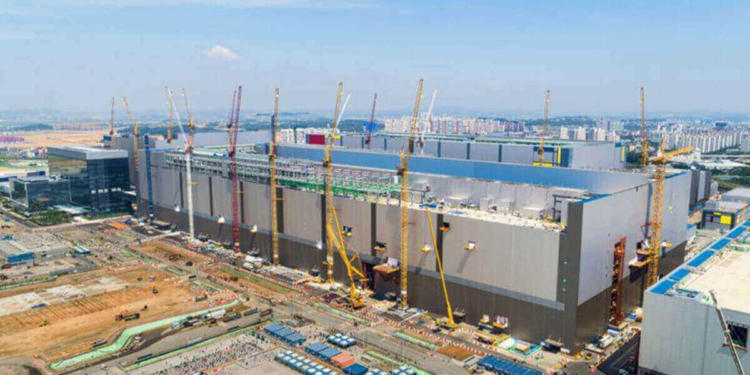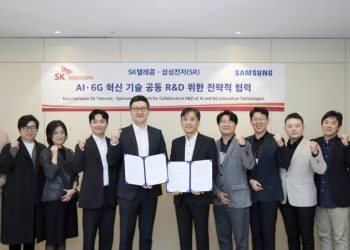On Monday, Samsung Electronics said it would inject 8.5 trillion won ($7 billion) in its advanced V-NAND flash memory chip plant at Pyeongtaek, Gyeonggi Province.
Samsung decided to construct a production line of V-NAND flash memory chip in response to a surge in demand for products using Internet-of-Things(IoT), 5G-networks, and artificial intelligence (AI). The company aimed to produce V-NAND flash chips by the second half of 2021 at its Pyongtaek factory.
The tech giant said it would build a new upscale foundry line in the Pyeongtaek plant on May 21 and a schedule to operate in the second half of 2021. The company already invested 10 trillion won for this purpose.
Samsung intends to inject another 15 trillion won ($12.3 billion) in the DRAM EUV line at the second plant in the future.
Completed in 2015, the Pyeongtaek plant became the world’s biggest semiconductor production complex. Samsung mass-produced DRAMS on the second floor and NAND on the first floor.
The company would begin rolling out DRAMs through extreme-ultraviolet lithography within the year at the second plant while pressing on the schedule next year for producing NAND.
In July of 2013, Samsung introduced its 24-layer first-generation 128-Gigabit MLC 3D V-NAND. For the past six years, the company continuously dedicated itself to transforming and updating its NAND technologies for the last six years. Last year, Samsung produced the latest sixth-generation NAND with over 100 layers in full swing.
New Digital Transition
Digital transformations already started with the use of e-commerce and cloud computing services even before the pandemic. A surge in the use of video streaming led by YouTube and Netflix use created a massive demand for auxiliary devices, including corporate flash chips.
Samsung made the investment decision in anticipation of the new digital transition caused by the COVID-19 pandemic. The disease made possible the transition of corporate and business meetings virtually to address social distancing measures. The pandemic also greatly affected the consumption behavior of people.
Samsung made sure the move is to emphasize its leading position in the memory chip market, although it deals with a challenging business setting.
Samsung operates manufacturing plants in Xi’an, China, and Hwaseong in Pyeongtaek for its NAND flash chip.
In May, Lee Jae-yong, Samsung’s Vice Chairman, visited Xian, China, to oversee the process of building a second NAND chip line there. Lee’s visit drew out hopes that Samsung would concentrate on producing advanced DRAM chips in South Korea and NAND chips in China.
“We will continue to serve the market with the most optimized solutions available.”
-Choi Cheol, Samsung’s executive vice president of memory global sales and marketing
Choi stated that the new investment reiterates its pledge to maintain its undisputed leadership in memory chip technologies.






